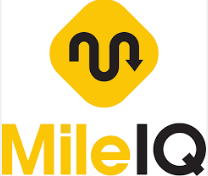
What is the net worth of your business? One way that you, your investors or creditors can tell is by looking at your balance sheet. This financial statement offers a snapshot of the health of your business. It shows your assets versus liabilities and equity. If you’re not sure how to document these financials, read on to learn how to create a balance sheet.
How To Create a Balance Sheet: What to Include
A balance sheet is also known as a statement of financial position. That is, it shows what assets your business has versus the liabilities and equity.
You can represent that as the following equation:
Assets = Liabilities + Equity
It’s important to understand each component of the balance sheet equation.
Assets are categorized on the balance sheet as current, fixed or other. Current assets include cash and other holdings that can be converted to cash within the year in the normal course of business. Other examples of current assets include inventory, securities, prepaid expenses and accounts receivable. Fixed assets are those you do not expect to sell or convert to cash like land, equipment, machinery. Other assets include intangible property like patents, copyrights and trademarks.
The second half of the balance sheet equation covers liabilities and equity. Liabilities are either current or long-term liabilities. Current liabilities are those due within a year like accounts payable, business credit card bills or taxes. Long-term or fixed liabilities include mortgages, bonds or loans. Lastly is equity.
Equity can be either owner’s equity or stockholder’s equity depending on the form of the business. Forms of equity include both invested capital and retained earnings. By rearranging the balance sheet equation, you can represent equity as assets minus liabilities. A financially healthy business should have a positive equity figure.
How To Create a Balance Sheet: How to Format it
Now that you understand the balance sheet equation, you’re ready to document it.
There are two common business sheet formats: Account and Report form. In Account form, the value of current, fixed and other asset categories is listed and totaled on the left side of a two-column worksheet. Current and long-term liabilities and owner’s equity are listed on the right side and totaled. Your math is correct when the two columns of the balance sheet, that is total assets and total liabilities plus equity, are equal. You can even add a separate “Projected” column to each of the standard two columns to communicate both your current and future assets, liabilities and equity.
In Report form, the same individual components of the balance sheet equation are included. But they are listed in a running format. Traditionally, the order is assets, then liabilities and finally owner’s equity.
Be sure to include a title, date, business information and category sub-headings to your balance sheet. This makes it easier for vested parties to read and evaluate your financials. This is important because the data included on your balance sheet may be used to make important decisions like whether to invest in your business.
This article was prepared for MileIQ. If you are a tax professional, click here to automatically start tracking your business travel.


















Recent Comments